You searched for: poland
<< Previous | Displaying results 501-550 of 1579 for "poland" | Next >>
-
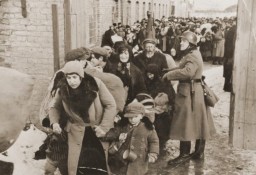
-
Our Springtime
SongMordecai Gebirtig, Yiddish folk poet and songwriter, was born in 1877 in Krakow, Poland. Gebirtig was confined in the Krakow ghetto in March 1942. He wrote "Our Springtime" in April 1942. The lyrics describe the bleakness and despair of ghetto life.
-
Our Town is Burning
SongMordecai Gebirtig, born in 1877 in Krakow, Poland, was a Yiddish folk poet and songwriter. He wrote "Undzer shtetl brent!" in 1936, following a pogrom in the Polish town of Przytyk. During the war, the song became popular in the Krakow ghetto and inspired young people to take up arms against the Nazis. It was sung in many ghettos and camps, and translated into Polish and several other languages. Gebirtig was killed in June 1942 during a roundup for deportation from the Krakow ghetto. Today, "Undzer…
-
Liquidation of the Krakow Ghetto
Timeline EventMarch 13-16, 1943. On this date, SS and police authorities liquidated the Krakow ghetto.
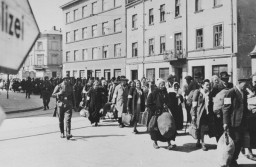
-
Warsaw Polish Uprising
Timeline EventAugust 1, 1944. On this date, the Warsaw uprising began with the Polish Home Army rising against the Nazis in an attempt to liberate Warsaw.

-
Krakow Ghetto Established
Timeline EventMarch 3-20, 1941. During these dates, German authorities announced, established, and sealed the Krakow ghetto.
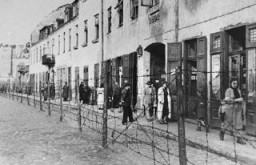
-
Samuel Soltz's Visa
Timeline EventAugust 21, 1940. On this date, Samuel Soltz's visa was stamped by Chiune Sugihara, the Japanese consul to Lithuania.
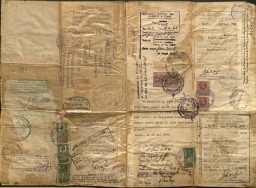
-
Regina Gutman
ID CardRegina was born in Radom, a city that had 120,000 inhabitants. Her father worked as a leather cutter for a large shoe manufacturer and her mother took care of their six children. The Gutmans were very religious and Regina attended Hebrew school in the afternoons. Radom had a vibrant Jewish community of some 30,000 people, several Yiddish daily newspapers, and beautiful synagogues. 1933–39: On September 1, 1939, the German army invaded Poland, and seven days later, Radom was occupied. Soon afterward, the…
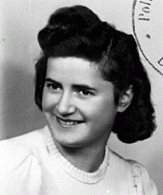
-
Chaim Frenkiel
ID CardChaim was the third of seven boys born to religious Jewish parents. They lived in a town near Warsaw called Gabin, where Chaim's father worked as a cap maker. Gabin had one of Poland's oldest synagogues, built of wood in 1710. Like most of Gabin's Jews, Chaim's family lived close to the synagogue. The family of nine occupied a one-room apartment on the top floor of a three-story building. 1933-39: In September 1939, two months before Chaim was 12, Germany invaded Poland. In Gabin 10 people were shot in…
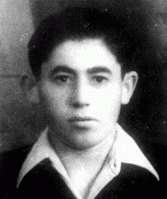
-
Laura Ellenbogen
ID CardLaura was one of five children born to a Jewish family in the southeastern Polish town of Rozwadow. Jews comprised almost two-thirds of the town's population. Laura's father worked as a wholesaler, providing families in the area with grain, potatoes and other produce. Laura attended one of the town's public schools. 1933-39: Germany and the Soviet Union partitioned Poland [as a result of the Nazi-Soviet Pact] in September 1939. Laura's town lay on the demarcation line. On September 24 the Germans reached…
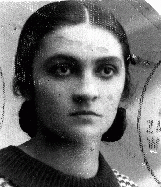
-
Mendel Rozenblit
ID CardMendel was one of six children born to a religious Jewish family. When Mendel was in his early 20s, he married and moved with his wife to her hometown of Wolomin, near Warsaw. One week after the Rozenblits' son, Avraham, was born, Mendel's wife died. Distraught after the death of his young wife and left to care for a baby, Mendel married his sister-in-law Perele. 1933-39: In Wolomin Mendel ran a lumber yard. In 1935 the Rozenblits had a daughter, Tovah. When Avraham and Tovah were school age, they began…

-
Aaron Lejzerowicz: Maps
Media EssayBorn to a Jewish family in Poland, Aaron Lejzerowicz was endangered by the German invasions of Poland and the USSR. These maps offer a small glimpse of German military activity over the course of World War II—events w...
-
Chuna Grynbaum: Maps
Media EssayChuna Grynbaum was born to Jewish parents in Starachowice, Poland in 1928. When he was 13 years old, Chuna was sent to forced labor at a munitions factory. In 1943, he attempted to escape with his sister, Faiga. Faiga...
-
Gisha Galina Bursztyn: Maps
Media EssayBorn to Jewish parents in Poland, Gisha Galina Bursztyn moved to the city of Warsaw after she married. On September 1, 1939, Germany invaded Poland. Warsaw fell four weeks later, and a ghetto was set up in November 1940. During a massive roundup i...
-
Jozef Wilk: Maps
Media EssayBorn to Roman Catholic parents in Poland, Jozef Wilk was a teenager when Germany invaded in 1939. Jozef left for Warsaw and joined a special unit of the Polish resistance. During the 1943 Warsaw ghetto uprising, Joz...
-
Max Rosenblat: Maps
Media EssayMax Rosenblat was only two months old when Germany invaded Poland in 1939. The Germans occupied Radom and evicted all the Jews from the street where the Rosenblats lived. Max and his parents lived in a shack in a ghetto until August 1942, when the...
-
Yitzhak (Irving) Balsam: Maps
Media EssayYitzhak Balsam was just under 15 years old when Germany invaded Poland in September 1939. Like other Jewish men in Praszka, he was forced to build roads outside of town. Yitzhak was later deported to several camps, including Auschwitz, and was imp...
-
Szlamach Radoszynski: Maps
Media EssaySzlamach Radoszynski was 27 years old when Germany invaded Poland in September 1939. The following year, Szlamach and the rest of the Jews of Warsaw were forced into a ghetto. After the ghetto uprising in 1943, Szlamach was deported to Auschwitz a...
-
Julien Bryan: Photographs and Film
Media EssayExplore images and film by US filmmaker and photographer Julien Bryan, including documentation of Warsaw following the German invasion of Poland.
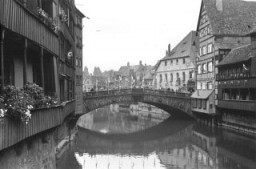
-
Sobibor - Maps
Media EssayThe Sobibor killing center in German-occupied Poland was one of four camps linked to Operation Reinhard. On October 14, 1943, Jewish prisoners in the camp launched an uprising. After the revolt, Sobibor was dismantled. At least 170,000 people were...
-
The Council for Aid to Jews: Żegota
Media EssayThe Council for Aid to Jews (codenamed “Żegota”) was an underground rescue organization of Poles and Jews. It operated in German-occupied Poland from December 4, 1942, to January 1945 and was supported by the Polish government-in-exile. Żegota’s main objective was to coordinate efforts to save Jews from Nazi persecution and murder. Its members worked clandestinely, often risking their own lives and the lives of their families and friends. Żegota supplied tens of thousands of Polish Jews with fake…
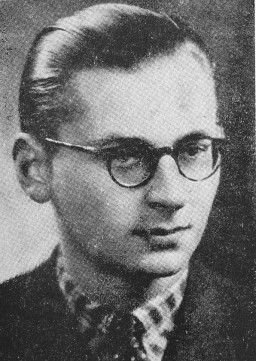
-
Warsaw district handbill announcing penalties for anyone caught assisting Jews
ArtifactOn September 5, 1942, the SS and Police Leader of the Warsaw District issued this announcement threatening the death penalty for anyone who aided Jews who had left the ghetto without authorization. This poster was put up in the wake of the mass deportation of Jews from the Warsaw ghetto to the Treblinka killing center in summer 1942. SS officials were well aware that thousands of Jews had fled the ghetto to go into hiding and urged people to turn them in. The poster reminds the city's non-Jewish…

-
Postcard sent to Ruth Segal (front)
DocumentA postcard sent to Ruth Segal (Rys Berkowicz) care of the Jewish Community (JewCom) in Kobe, Japan. Family and friends in German-occupied Warsaw, Poland, sent the postcard on June 20, 1941. It bears stamps both from the Jewish council (Judenrat) in the Warsaw ghetto and from German censors. [From the USHMM special exhibition Flight and Rescue.]
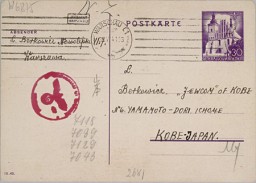
-
Postcard sent to Ruth Segal (back)
DocumentFamily and friends of Ruth Segal (Rys Berkowicz) sent this postcard to her in Kobe, Japan. They sent the postcard from Warsaw, in German-occupied Poland, on June 20, 1941. [From the USHMM special exhibition Flight and Rescue.]
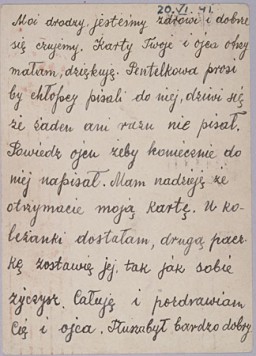
-
Second telegram from the Chief Rabbi of Vilna asking for aid
DocumentA second RCA Radiogram telegram from Rabbi Grodzenski, Chief Rabbi of Vilna, to the Central Relief Committee in New York. He requests aid for refugees who have gathered in Vilna. The telegram says that more than 1,600 yeshiva students and their families from over 10 cities throughout Poland have fled to Vilna, where they remain in terrible living conditions. November 5, 1939. [From the USHMM special exhibition Flight and Rescue.]
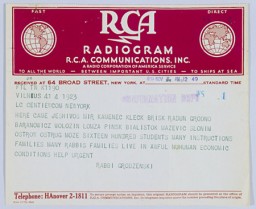
-
Max Diamant's identity card (outside)
DocumentIn July 1942, the German health department located in Krakow (Krakau), occupied Poland, issued this identity card to Max Diamant. This view shows the front and back covers of the card. The interior pages identify Diamant as a dental assistant in Przemysl, Poland, and show his signature and photograph mounted under the stamped word "Jew."

-
Max Diamant's identity card (inside)
DocumentMax Diamant obtained this identity card from the German health department located in Krakow (Krakau), occupied Poland, in July 1942. This view shows the interior pages, which identify him as a Jew and detail his personal information, such as occupation (dental assistant), birthdate (June 23, 1915), birthplace (Vienna), and current address in Przemysl, Poland.

-
Work permit issued to Max Diamant
DocumentDr. J. Rebhan, chair of the Jewish council in Przemysl, Poland, signed this document certifying that Max Diamant had stable employment in the Jewish clinic. The certificate identifies Diamant as a dentist and is dated June 4, 1942. During World War II, the Germans established Jewish councils to ensure that Nazi orders and regulations were implemented. Jewish council members also sought to provide basic community services for ghettoized Jewish populations.

-
Chelmno - Photographs
Media EssayThe Chelmo killing center in German-occupied Poland was the first stationary facility where poison gas was used for the mass murder of Jews. The SS and police began killing operations at Chelmno on December 8, 1941. At least 172,000 people were kill...
-
Chelmno (Abridged Article) - Photographs
Media EssayThe Chelmo killing center in German-occupied Poland was the first stationary facility where poison gas was used for the mass murder of Jews. The SS and police began killing operations at Chelmno on December 8, 1941. At least 172,000 people were kill...
-
Chelmno
Media EssayThe Chelmo killing center in German-occupied Poland was the first stationary facility where poison gas was used for the mass murder of Jews. The SS and police began killing operations at Chelmno on December 8, 1941. At least 172,000 people were kill...

-
Treblinka: Maps
Media EssayThe Treblinka killing center was one of four camps linked to Operation Reinhard. Known as Treblinka II, it opened in July 1942 about a mile from from Treblinka I, the labor camp. The Germans killed an estimated 925,000 Jews at Treblinka II, as well...

-
Auschwitz: Oral History Excerpts
Media EssayThe largest of its kind, the Auschwitz camp complex was essential to implementing the Nazi plan for the “Final Solution.” Learn about survivors’ experiences there in the following oral histories.
-
Warsaw: Maps
Media EssayDuring World War II, the Germans established ghettos where Jews were forced to live in miserable conditions. In October 1940, a ghetto was established in Warsaw, Poland. Before the war, Warsaw had the largest Jewish community in Europe. At its heigh...
-
Dosia Szabszevicz
ID CardDosia, her older sister and parents lived on her grandfather's estate in the town of Ozorkow, eight miles from Lodz. Dosia's parents were secular Jews. They spoke both Polish and Yiddish to each other, but only Polish to their children. Dosia's father worked as an accountant, and her mother was active in organizing charity events for several of Ozorkow's Jewish organizations. 1933-39: A few days after Germany invaded Poland in 1939, Dosia saw the Polish army retreat through Ozorkow, carrying their wounded…
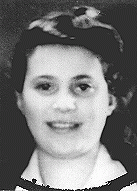
-
Singer sewing machine from the Lodz ghetto
ArtifactThis Singer sewing machine was used by shoemakers in the Lodz ghetto, Poland. As early as May 1940, the Germans began to establish factories in the ghetto and to utilize Jewish residents for forced labor. By August 1942, there were almost 100 factories within the ghetto. The major factories produced textiles, especially uniforms, for the German army.
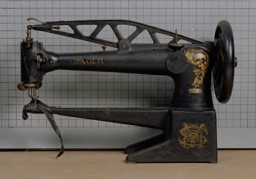
-
Lodz ghetto model
ArtifactLeon Jakubowicz, a shoemaker by training and a native of Lodz, began constructing this model of the Lodz ghetto soon after his arrival there from a prisoner-of-war camp in April 1940. The case holds a scale (1:5000) model of the ghetto, including streets, painted houses, bridges, churches, synagogue ruins, factories, cemeteries, and barbed wire around the ghetto edges. The model pieces are made from scrap wood. The case cover interior is lined with a collection of official seals, a ration card, and paper…
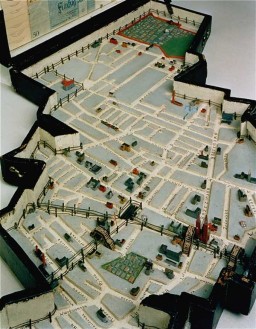
-
Dress Worn by a Hidden Child
ArtifactA blue and white child's dress worn by Sabina Kagan while living in hiding with the Roztropowicz family in Radziwillow, Poland, during World War II. Her rescuers used doll's clothing to make this dress. Sabina was just an infant when SS mobile killing squads began rounding up Jews in the Polish village of Radziwillow in 1942. Her parents persuaded a local policeman to hide the family. The policeman, however, soon asked the Kagans to leave but agreed to hide baby Sabina. Her parents were captured and…

-
Karel Bruml's concentration camp cap
ArtifactAfter being deported from Theresienstadt to the Auschwitz concentration camp in 1942, Karel Bruml wore this cap as a forced laborer in the Buna synthetic rubber works located in the Buna-Monowitz section of the camp.
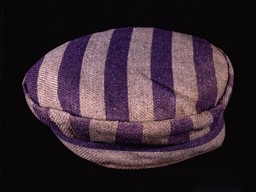
-
Hana Mueller's concentration camp skirt
ArtifactHana Mueller altered this skirt issued to her in the Auschwitz concentration camp in 1944 by using the hem to make pockets.

-
False identity for Żegota member Tadeusz Sarnecki
DocumentDuring World War II, people often used false identities and forged identity documents to evade Nazi authorities. False identities were essential for resistance fighters, aid workers, and Jews hoping to pass as non-Jews. Creating high-quality, convincing forgeries required dozens of people to work together clandestinely. It also required sophisticated photography and printing equipment. For Jews passing as non-Jews, acquiring forged documents could mean the difference between life and death. This forged…

-
Warsaw Polish uprising
FilmOn August 1, 1944, the Armia Krajowa (Polish Home Army) launched an uprising in Warsaw against the German occupiers. Although the Western allies dropped ammunition and supplies and the Soviet army was within sight of the city, the uprising was crushed. This German newsreel footage shows the German suppression of the uprising.
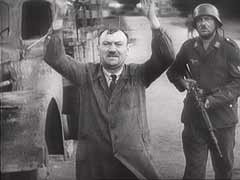
-
Aftermath of pogrom in Kielce
FilmA pogrom took place in Kielce, Poland, in July 1946. Forty-two Jews were massacred and about 50 more were wounded. The event touched off a mass migration of hundreds of thousands of Jews from Poland and other countries of eastern and central Europe. This clip shows Jewish refugees, survivors of the pogrom, waiting to leave Poland and crossing into Czechoslovakia.
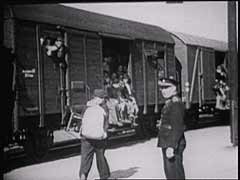
-
Liberation of Majdanek
FilmIn July 1944, Soviet forces liberated the Majdanek extermination camp. The Polish-Soviet Nazi Crimes Investigation Commission, established to document Nazi atrocities committed during the German occupation of Poland, ordered exhumations at Majdanek as part of its efforts to investigate Nazi mass killings in the camp. The commission later published its findings in Moscow on September 16, 1944, in Polish, Russian, English, and French.
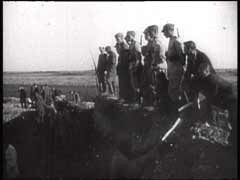
-
Chaim Engel describes sorting the clothing of Belzec prisoners killed in Sobibor
Oral HistoryIn 1939, as Chaim's tour in the Polish army was nearing its scheduled end, Germany invaded Poland. The Germans captured Chaim and sent him to Germany for forced labor. As a Jewish prisoner of war, Chaim later was returned to Poland. Ultimately, he was deported to the Sobibor camp, where the rest of his family died. In the 1943 Sobibor uprising, Chaim killed a guard. He escaped with his girlfriend, Selma, whom he later married. A farmer hid them until liberation by Soviet forces in June 1944.

